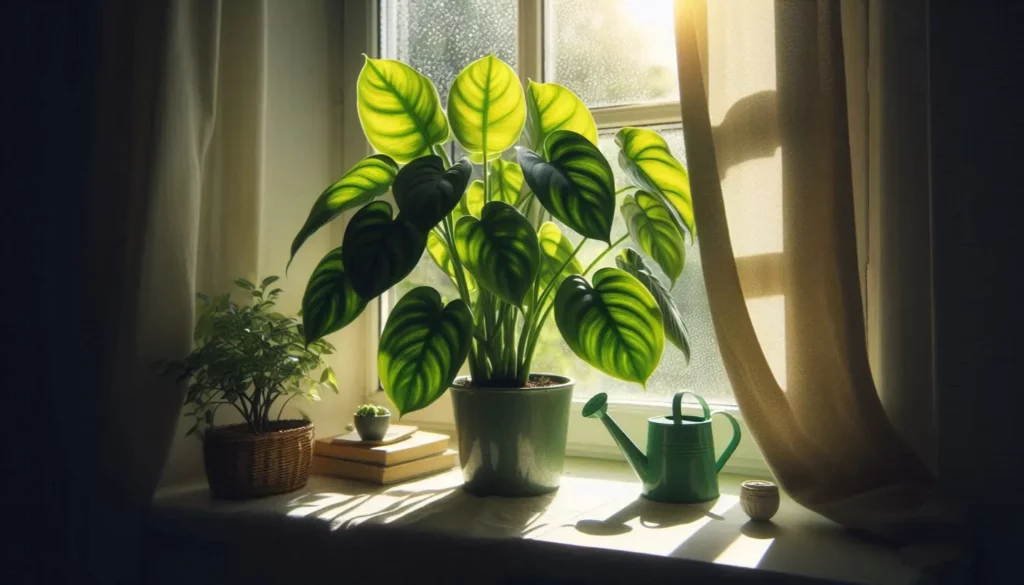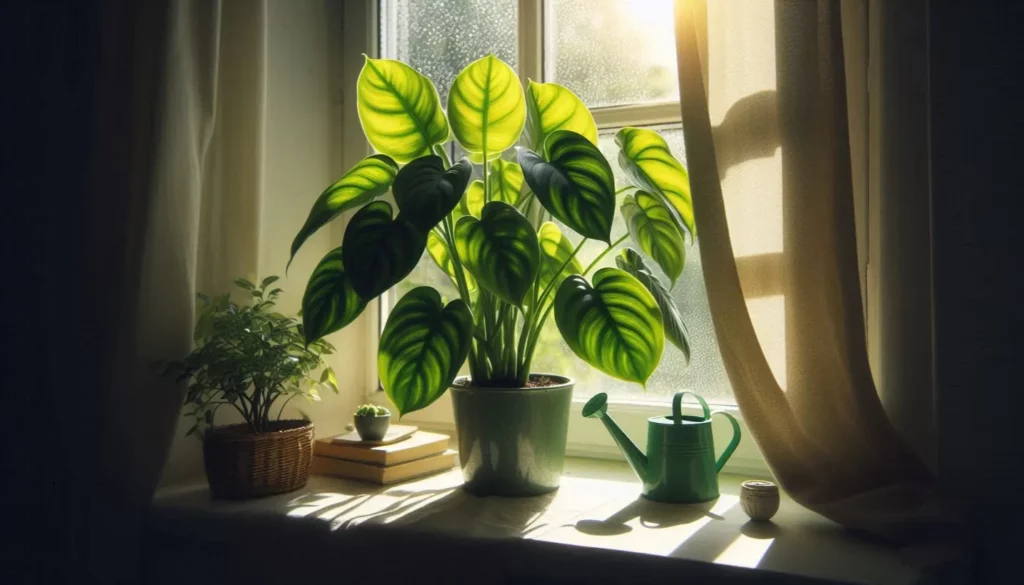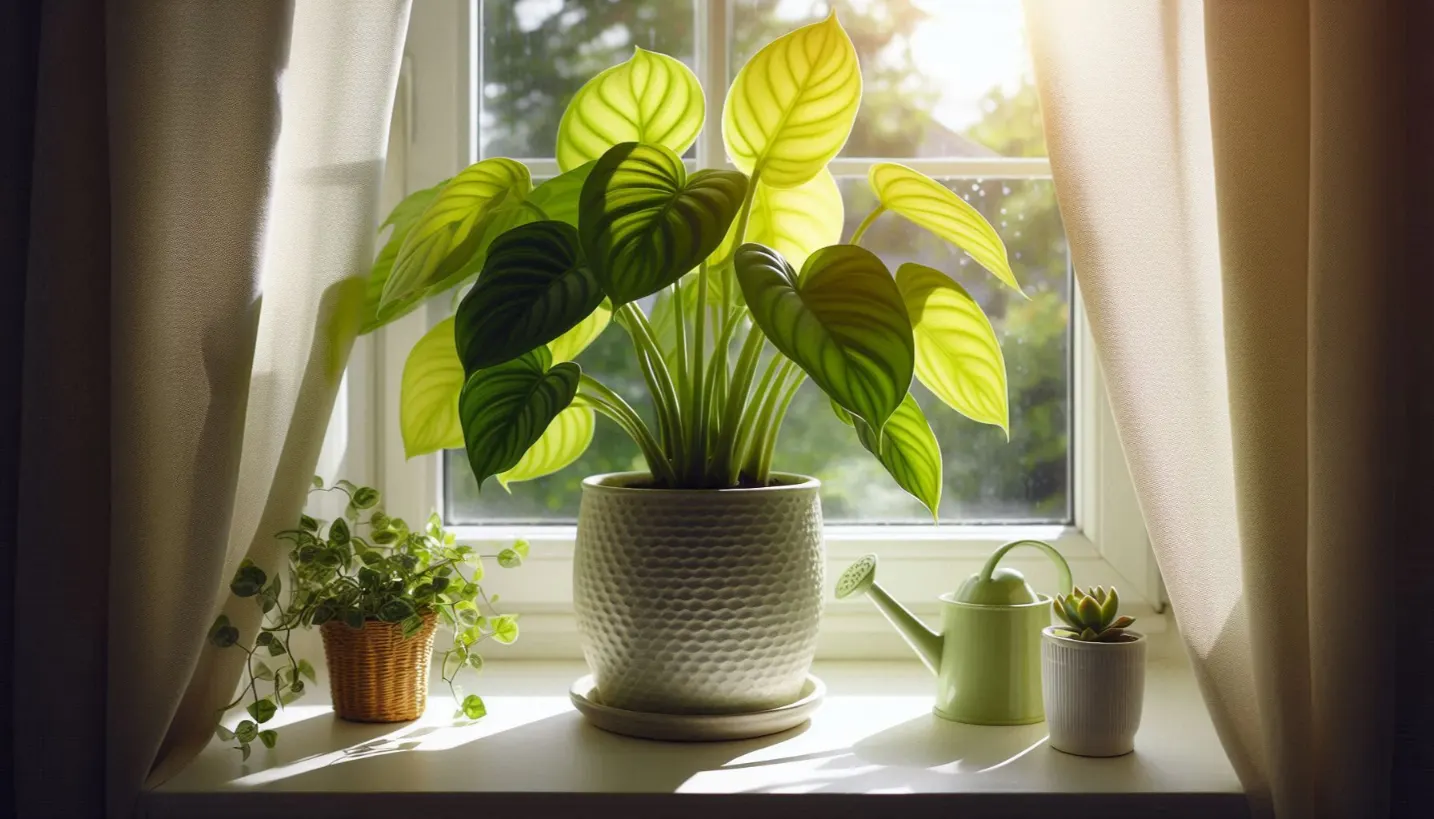Are you ready to unleash your inner green thumb and watch your Lemon Lime Philodendron flourish? This comprehensive guide will walk you through everything you need to know about caring for this stunning tropical plant. With its vibrant chartreuse leaves, the Lemon Lime Philodendron is sure to make a statement in any indoor space.
1. Overview of Lemon Lime Philodendron
The Lemon Lime Philodendron (Philodendron hederaceum ‘Lemon Lime’) is an attractive tropical plant with bright, heart-shaped neon green leaves. This plant is part of the diverse rare philodendron varieties that plant enthusiasts love to collect. Here’s a quick overview of its characteristics:
| Characteristic | Description |
|---|---|
| Origin | Central and South America |
| Mature Size | 4-8 feet tall, vines up to 20 feet long |
| Growth Rate | Moderate to fast |
| Toxicity | Toxic to pets and humans if ingested |
| Air Purification | Removes toxins like formaldehyde and benzene |
Removes toxins like formaldehyde and benzene
2. Lighting Requirements

Adequate lighting is essential for maintaining the health and vibrant colors of your Lemon Lime Philodendron. Here’s what you need to know:
| Light Condition | Suitability |
|---|---|
| Bright, indirect light | Ideal |
| Low light | Tolerated, but may lead to slower growth |
| Direct sunlight | Avoid, can scorch leaves |
Pro Tip: Place your plant near an east or north-facing window for optimal light exposure. For more detailed information, check out our comprehensive guide on philodendron light requirements.
3. Watering Needs
Maintaining the right moisture level is key to preventing both underwater and overwatering issues:
| Watering Frequency | Season |
|---|---|
| Once a week | Spring and Summer |
| Once every 2 weeks | Fall and Winter |
How to water:
- Check the top 1-2 inches of soil for dryness.
- Water thoroughly until water drains from the bottom.
- Empty the saucer to prevent standing water.
For more in-depth information on watering, visit our article on watering needs of philodendrons.
4. Soil Requirements and Fertilization

Creating the perfect soil environment will ensure your Lemon Lime Philodendron thrives. Learn how to create the ideal philodendron soil mix with these components:
| Soil Component | Ratio |
|---|---|
| Indoor potting mix | 2 parts |
| Perlite | 1 part |
| Orchid bark | 1 part |
Fertilization Schedule:
- Growing season (Spring/Summer): Every 2 weeks with diluted liquid fertilizer
- Dormant season (Fall/Winter): Monthly fertilization
5. Humidity and Temperature
Lemon Lime Philodendrons thrive in warm, humid conditions. Here’s how to create the ideal conditions:
| Factor | Ideal Range |
|---|---|
| Humidity | 60% or higher |
| Temperature | 65-80°F (18-27°C) |
Humidity boosting methods:
- Regular misting
- Pebble tray with water
- Humidifier
6. Pruning and Propagation
Keep your plant looking its best and create new plants with these techniques:
Pruning:
- Trim dead or yellowing leaves
- Pinch off growing tips to encourage bushiness
- Use clean, sharp scissors to make cuts
Propagation:
- Cut a stem with at least one node and leaf
- Place in water or moist soil
- Wait for roots to develop (2-4 weeks)
- Transfer to a pot with fresh soil
For a detailed guide on propagation, check out our article on philodendron propagation methods.
7. Common Pests and Diseases
Stay vigilant and address these issues promptly:
| Problem | Symptoms | Treatment |
|---|---|---|
| Spider mites | Tiny webs, stippled leaves | Neem oil, insecticidal soap |
| Mealybugs | White, cottony masses | Rubbing alcohol, insecticidal soap |
| Root rot | Yellowing leaves, mushy stems | Reduce watering, repot in fresh soil |
For more information on plant health, visit our guide on philodendron plants pests and diseases.
8. Display and Placement Tips
Showcase your Lemon Lime Philodendron with these ideas:
- Hanging baskets for trailing vines
- Moss poles for vertical growth
- Decorative plant stands
- Terrariums (for smaller specimens)
Remember to rotate your plant regularly for even growth and to prevent leaning towards light sources. For more creative ideas, check out our article on how to transform your home with philodendrons.
This guide will help you grow a beautiful Lemon Lime Philodendron that will impress your plant-loving friends.
Happy growing!
References
How to Grow and Care for Golden Goddess Philodendron – The Spruce
Displaying bright yellow-green foliage, this climbing philodendron is native to Thailand and is commonly known as Malay gold or lemon-lime philodendron. It..
How To Care For Philodendron Lemon Lime: Ultimate Guide
Neon Pothos It’s easy to confuse a Lemon Lime Philodendron and Neon Pothos. But there are some key differences. The main thing to look for..
Ultimate Lemon Lime Philodendron Care & Growth Guide – Gardening Inside
March 13, 2022· Amber Jackson· Total 216 Shares Share1 Tweet0 Pin it215 Share0 Lemon lime philodendron has bold and attractive foliage with a bright neon..
Philodendron Lemon Lime Care: An Easy Guide for Keeping It Healthy
Philodendron lemon lime plants like to be kept around 75-85 degrees Fahrenheit for optimal growth. If you live in an area that has very hot..
Lemon Lime Philodendron: Growing and Care Guide
The lemon lime philodendron requires bright indirect sunlight. The plant typically receives filtered sunlight in shaded areas in its rainforest habitat.
How to Grow and Care for Golden Goddess Philodendron – The Spruce. https://www.thespruce.com/golden-goddess-plant-growing-guide-5219621.
Philodendron Lemon Lime Care: An Easy Guide for Keeping It Healthy. https://philodendronplantcare.com/philodendron-lemon-lime-care/.
How To Care For Philodendron Lemon Lime: Ultimate Guide. https://twopeasinacondo.com/growing-guides/philodendron-lemon-lime-care/.
Lemon Lime Philodendron Care and Growing Guide | Plantcarefully. https://www.plantcarefully.com/lemon-lime-philodendron/.
Philodendron Lemon Lime [Complete Care Guide] – Plants Craze. https://plantscraze.com/philodendron-lemon-lime/.
